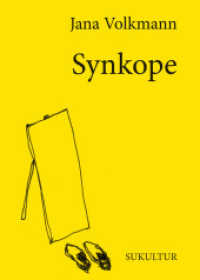Full Description
It has never been more important for inclusive design research to inform society. Based on 20 years of research and incorporating perspectives from over 500 participants, this book provides a critical overview of public toilet design in the UK and presents an urgent need to re-evaluate the accessibility of, and culture around, these essential spaces.
Public toilets are a vital element of public health infrastructure and an area of the built environment that everyone would use, if they could. Drawing from a rich body of research into toilet design, public services, accessibility and social injustice, Jo-Anne Bichard and Gail Ramster explore the complexities around using these facilities and examine a diverse array of design considerations related to age, disability, neurodiversity and gender. The authors look at the development of toilet design in the UK, discussing examples of successful and failed designs, and present an innovative approach for the future that reframes a space associated with unpleasantness and inaccessibility as one that is essential and respected.
This rigorous study takes into consideration the body's needs and decision making on leaving home, issues of navigating, locating and entering facilities, and issues related to cubicles, fixtures, products and hygiene. The authors present an inclusive design approach that can help designers, planners and managers create these spaces more effectively and understand what every prospective user might need, with a sense of safety, comfort and dignity.
Contents
List of Figures
Notes on Authors
Preface
Acknowledgements
Chapter 1. Introduction
Chapter 2. Designing inclusive public toilets in the twentieth century
Chapter 3. Inclusive design
Chapter 4. Everybody goes
Chapter 5. The journey
Chapter 6. Crossing the threshold
Chapter 7. Closing the door
Chapter 8. In the cubicle
Chapter 9. Water and wellness
Chapter 10. Rethinking public toilet provision
Chapter 11. Conclusion
Recommended Reading
Notes
Glossary
Bibliography
Index








